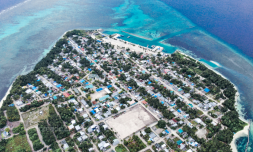Denmark is set on building the world’s first energy island, which will be the size of 18 football pitches.
Denmark has a history of being a global leader in renewable energy. In 1991, they built the first offshore wind farm, and currently 48.6% of the energy produced by the country comes from wind power.
Now, following the Danish government’s 2020 Climate Action Plan, they intend to construct two energy islands, one in the North Sea and another in the Baltic.
This ambitious project involves building an island off the Danish coast to situate 200 giant wind turbines. The construction project is the largest in Danish history, costing at least $34 billion.
The Danish Energy Agency has described them as “green power plants at sea”, connecting the wind turbines directly to electricity grids to power at least 5 million homes initially, potentially doubling in the future.
This ‘radical vision’ will not only benefit Denmark, but neighbouring European countries as well. Germany, Belgium and the Netherlands have already signed off agreements, and it’s possible that the UK could also be beneficiaries of this green future.
Peter Larson, of the North Sea Wind Power Hub Programme, has also highlighted how the energy islands could act as a model for future European green energy projects.
“It’s in Danish waters, yes, but it could conceptually be in any other country.”




















